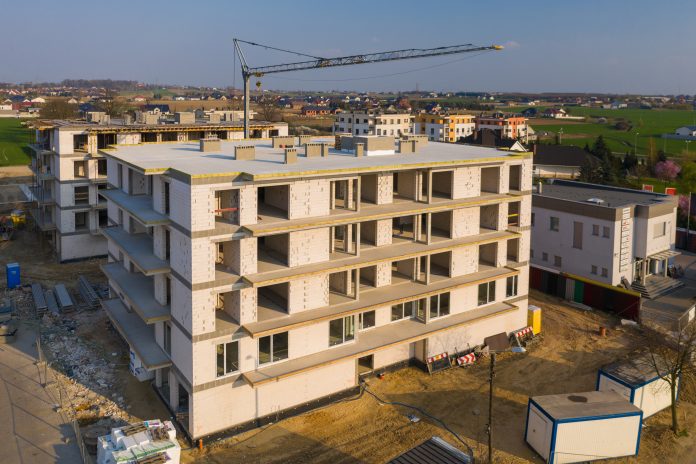Daniel Carbonell, TRI-HP Project Coordinator from SPF Institute for Solar Technology, explains how this EU funded project TRI-HP develops trigeneration systems based on heat pumps with natural refrigerants and multiple renewable sources, to provide heating, cooling and electricity to multi-family buildings
Funded by the European Union’s Horizon 2020 Research and Innovation Programme, and coordinated by SPF Institute of Solar Technology, TRI-HP project is a four-year Horizon 2020 project that started in March 2019. Within the project, two main systems will be developed:
- Dual-source/sink heat pump system with the possibility to use ground and/or air as heat sources/sinks.
- Solar-ice system based on supercooling ice-slurry heat pump with solar energy as the main renewable heat-source.
TRI-HP systems will include advanced controls, managing electricity, heat and cool in a way that optimises the performance of the system and increases its reliability via failure self-detection. Moreover, TRI-HP will provide the most appropriate knowledge and technical solutions to cope with stakeholder’s needs, building demand characteristics, local regulations and social barriers, with an on-site renewable share of 80%, reducing the installation cost by 10-15%.


Boundary conditions of TRI-HP systems
As a first step, the boundary conditions used to design and assess the developed systems were established. Tecnalia has worked on the definition of reference climates and buildings, representative for the market that TRI-HP focuses on. For the defined cases, the calculation of the energy demands of the buildings has been carried out, including electricity, heating, cooling and domestic hot water demands.
This reference data will be used as an input for the design of the systems developed within the project as well as for the extrapolation to various conditions, maximising the impact of the project.
The design conditions for the heat pumps, technical, economic and performance Key Performance Indicators (KPIs) for the TRI-HP systems have been defined. The defined KPIs will be used for the evaluation of the experimental results and simulations at component level (heat pump) and system level.
Moreover, a system simulation framework called pytrnsys has been developed by SPF. Pytrnsys is a python based open source package that allows to easily built, run and process TRNSYS simulations. It can be linked to a graphical user interface (GUI) developed also by SPF that facilitates the setting up of user-defined hydraulic configurations for general heating and cooling supply systems.
Moreover, a first economic assessment was made for the solar ice-slurry and the dual source/sink systems, and the new developments that include a tri-partite gas cooler, a supercooler and a dual-source heat exchanger.
Supercooling method and avoiding ice formation
In the TRI-HP concept, supercooled water is used to generate ice slurry. A stream of water flowing into a supercooler is cooled by a few degrees below normal freezing temperature without crystallising. After leaving the supercooler, the water flow is disturbed to generate ice crystals. A key problem of this system is to avoid ice formation and blocking of the supercooler.
Danish Technological Institute (DTI) from Denmark, Industrielack AG (ILAG) – a Swiss company and the Refrigeration Institute from Karlsruhe University of Applied Sciences (UASKA), together with SPF Institute for Solar Technology (SPF) are investigating a large variety of icephobic coatings and materials. The aim is to identify a durable icephobic coating/material to be used for developing a compact and reliable supercooler (evaporator). The evaporator will be then used for the new heat pumps based on CO2 and propane from the TRI-HP solar ice-slurry system.
Icephobic coatings at DTI, Denmark
DTI develops coatings to prevent/delay the formation of ice on the walls of supercooling heat exchangers. By applying the coatings, the water can be supercooled and the risk of ice formation in the heat exchanger minimised. DTI’s coatings are isocyanate free hybrid coatings, using hybrid silicone-epoxy resins as the main coating constituent.
Icephobic coatings at ILAG, Switzerland
Different new hydrophobic coatings based on several chemical strategies were developed by ILAG and tested by DTI under laboratory conditions regarding adhesion, surface energy (contact angle), freeze depression under atmospheric conditions, pseudo Barnacle Test (PBT) and ice adhesion.
During the coatings development, a new adhesion promotor for the coating of fluoropolymers on copper was developed. The most promising coatings with lowest stable freeze depression were sprayed on copper tubes to validate the icephobic properties with supercooled water flows in a specific laboratory test rig at SPF.
Results on testing icephobic coatings and materials
To choose a suitable coating, the freeze depression, freeze delay, ice adhesion, contact angle and stability of the coatings was assessed. Considering the mean water freezing temperature (Figure 3) and the coatings’ stability, three coatings from DTI and ILAG were selected for further investigations. Some of the coatings (see Figure 3) showed stable freezing temperatures below -6°C. These samples have a hydrophobic behaviour.

Bulk Material Approach
To understand the ice prohibiting properties of amorphous bulk materials or nanocrystalline, several freeze depression tests were carried out at UASKA. The achieved mean water temperature before freezing is shown in Figure 4. Furthermore, the time holding the supercooled temperature is also an indicator of the supercooling performance of the material. With the amorphous metals, like Vit105 and AMZ4, a drop of pure water can be supercooled for over two hours, while the droplets on the other two materials freeze during the cooling.

Social issues of novel renewable energy heating/cooling systems
As TRI-HP aims to bring to the market innovative heating/cooling systems, it was considered as high importance issue to investigate and understand the potential social impacts of TRI-HP systems and improve the stakeholders’ acceptance towards them.
Particular emphasis was given to market acceptance in order to understand potential barriers and hindrances for the adoption of TRI-HP by market participants.
Based on a literature review focusing on empirical social science studies on the acceptance and adoption of innovative renewable heating and cooling systems (RE H/C), Institute for Social-Ecological Research ISOE has identified the key social and contextual factors that could promote or impede further developing and upscaling of TRI-HP systems.
The findings show that both economic and noneconomic factors, such as socio-cultural issues, local contexts and user practices play an important role for the acceptance of RE H/C systems and must be seriously considered by TRI-HP partners. In a nutshell, the main barriers that are considered to hinder the roll-out of TRI-HP systems are the following:
- High installation costs & long payback periods.
- Lack of awareness, (access to) information and understanding of technology (complexity).
- Lack of experience, skill and training, in planning and installation.
- Lack of adequate space for the installation of solar thermal and photovoltaic modules, and of ice storage.
- Perception of complexity and technical risks.
Click here for more info about social issues of novel renewable energy heating/cooling systems.
Like and share TRI-HP news on LinkedIn and Twitter to stay up to date!
Questions? tri-hp@spf.ch
Please note: This is a commercial profile











